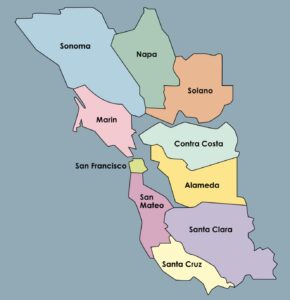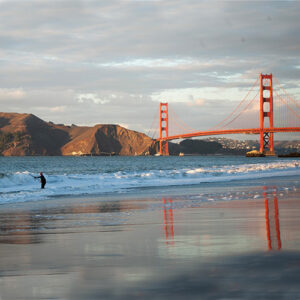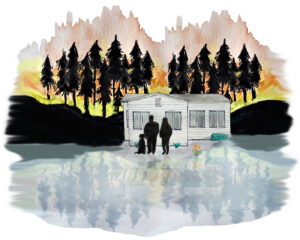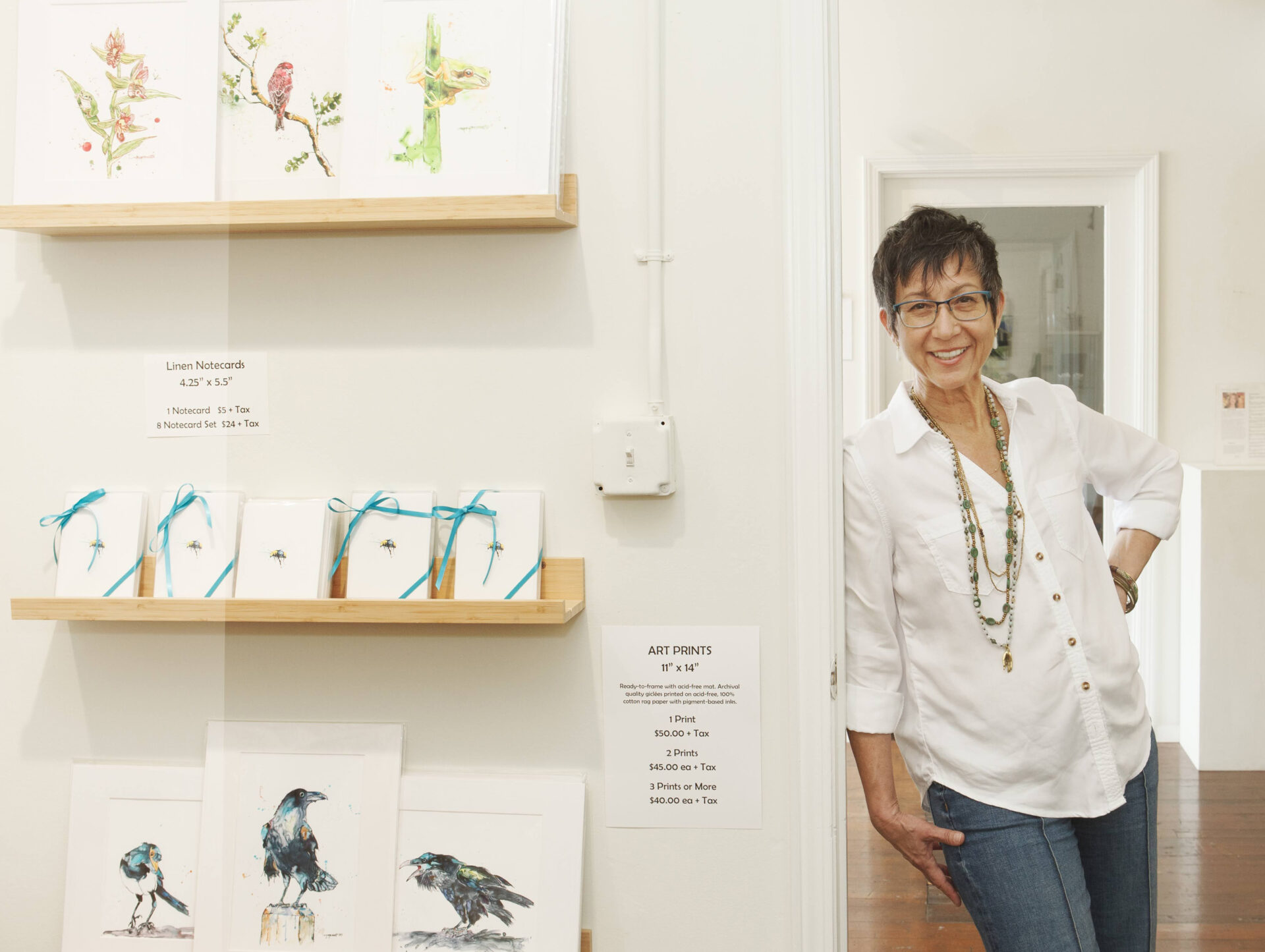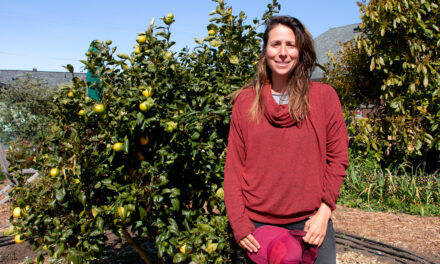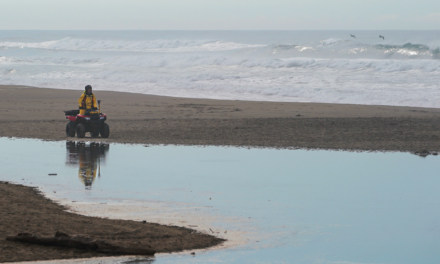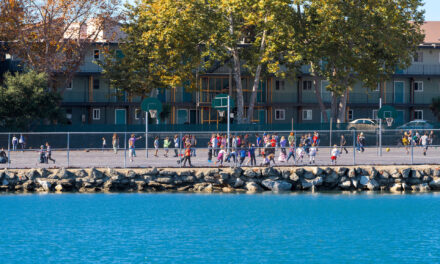Ecologist Finds Art in Restoring Levees
Looking around Cassandra Nguyen Musto’s loft studio at the Arthouse on R Street in Sacramento, you’ll notice her knack for creating a “scientific yet cozy vibe.” It’s a product of her unique background — with a degree in landscape architecture from Cal Poly San Luis Obispo and a minor in art, spatial design comes to her effortlessly.
“I have little skulls, antlers, and things that I found in my work on the levees out in the field. They are what you would call oddities and curiosities mixed in with this elevated experience. You know it’s not necessarily luxury, but it’s relaxing and welcoming, accessible energy.”
Nguyen Musto is an artist whose watercolor and multimedia work is inspired by the plants and little creatures that she encounters on her day job as a restoration ecologist for the California Department of Water Resources’ flood management division. She views her art as a “subtle invitation” to explore California’s native species and inspire sustainable actions. Both the restoration ecology work and watercolors are echoes of ancient natural landscapes that existed before modern developments.
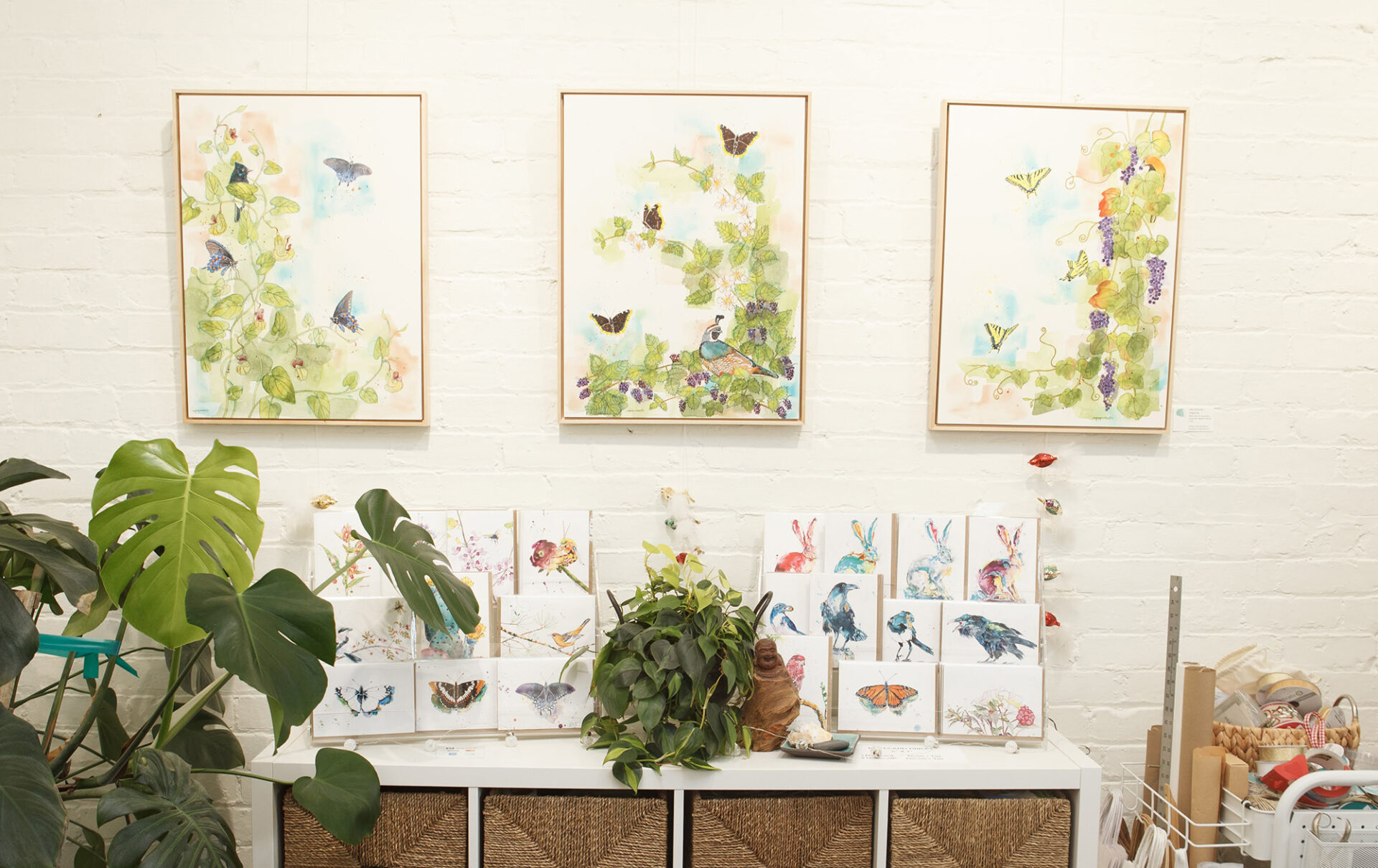
Nguyen Musto’s studio features many of the creatures she sees during levee reconstruction projects. Photo: Diane Mitchell
“Before people came looking for places to golf, we had big floodplains and millions of migratory birds. Now, with development and farming, we only have about 5% of the riparian habitat left — [the] plants, trees, and animals related to waterways. Floodplains are now covered with homes and cities,” she says.
Restoration ecology is part biology, part architecture, and what some consider an art in and of itself. Although maintaining a healthy ecosystem, restoring biodiversity, and mitigating climate change are the primary drivers of Nguyen Musto’s work, aesthetics play a significant role. Most of Nguyen Musto’s restoration projects center around removing the riprap — layers of large stones — that armor flood protection levees. Removing the riprap is the easy part, but figuring out what to do next is more complicated.
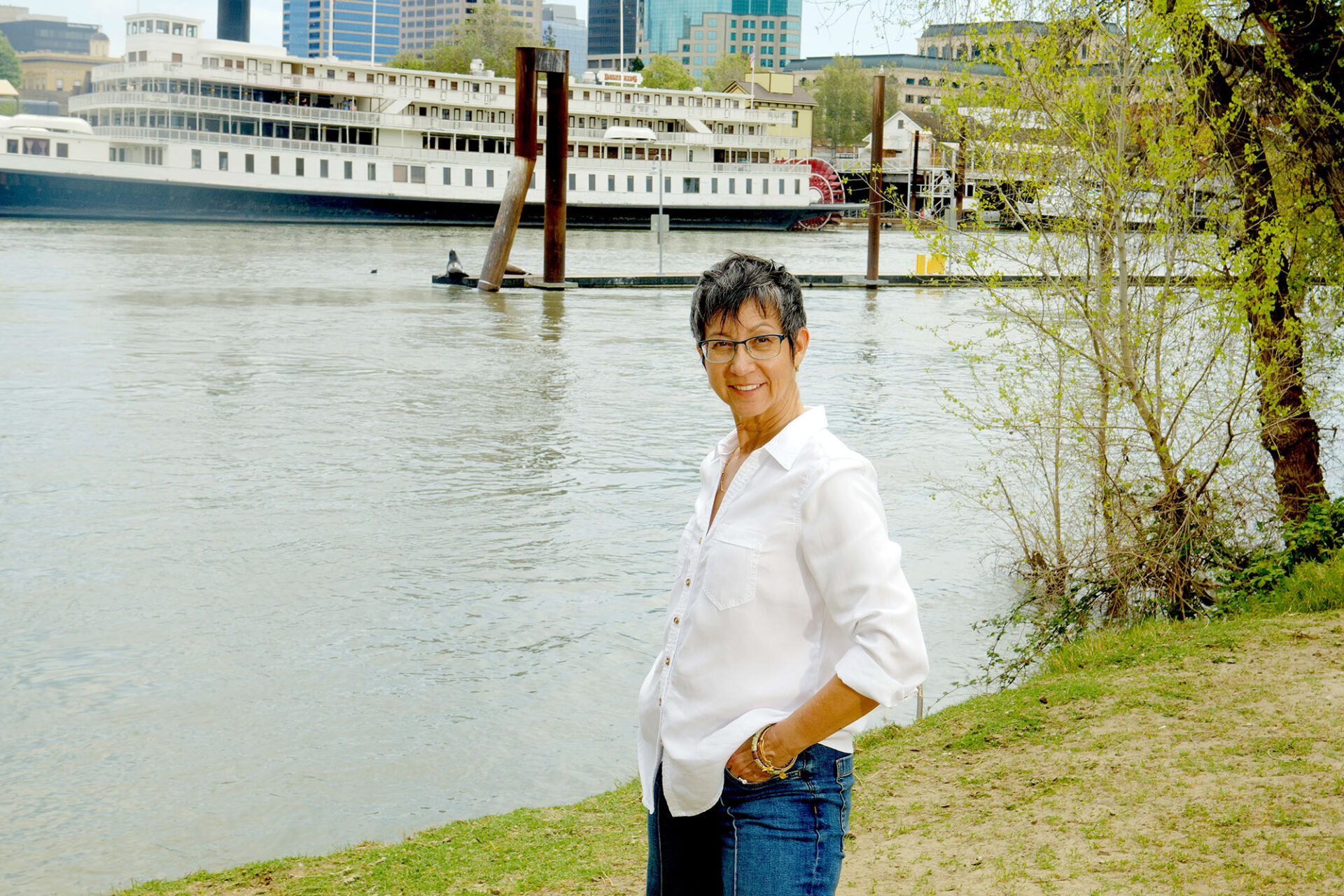
Photo: Diane Mitchell
“We’re implementing resource agency habitat expectations in an ever-changing environment, respecting local tribes’ cultural artifacts that can be found near or within levees, balancing levee integrity with habitat enhancements, avoiding disturbance of sensitive species, and working within very short work windows to get it done,” says Nguyen Musto.
As much as Nguyen Musto loves her work, she admits it can be like solving a puzzle. When levee banks are being repaired, trees and vegetation within the repair zone have to be moved, making the bank vulnerable to erosion. Often, projects add riprap to protect the bank. But the loss of vegetation means the exposed rocks cook in the sun, which can elevate the water temperature and stress or kill fish and other aquatic organisms in the understory of the levees.
Nguyen Musto and her colleagues reduce this harm with bioengineering techniques that can stabilize the levee slope while also incorporating new riparian plants and shrubs. Those bits of greenery keep the rocks cool and serve as habitat for aquatic life — hopefully, for the long term.
”During the post-construction maintenance period, the planting crew is under contract for one year to keep everything alive. After one year, if the planting contractor has met the plant survival requirements, we then release the site and tell our shiny new baby, ‘Okay, time for you to prosper and create habitat abundance,’” she says.
In the past, Nguyen Musto used her spare time to volunteer for the California Native Plant Society and help restore local cemetery gardens. Her riparian and riverfront restoration work, meanwhile, remains crucial in keeping her favorite winged creatures — from the sandhill crane to the purple martin — safe and protected. And she continues to enjoy being out on the Sacramento-San Joaquin River Delta.
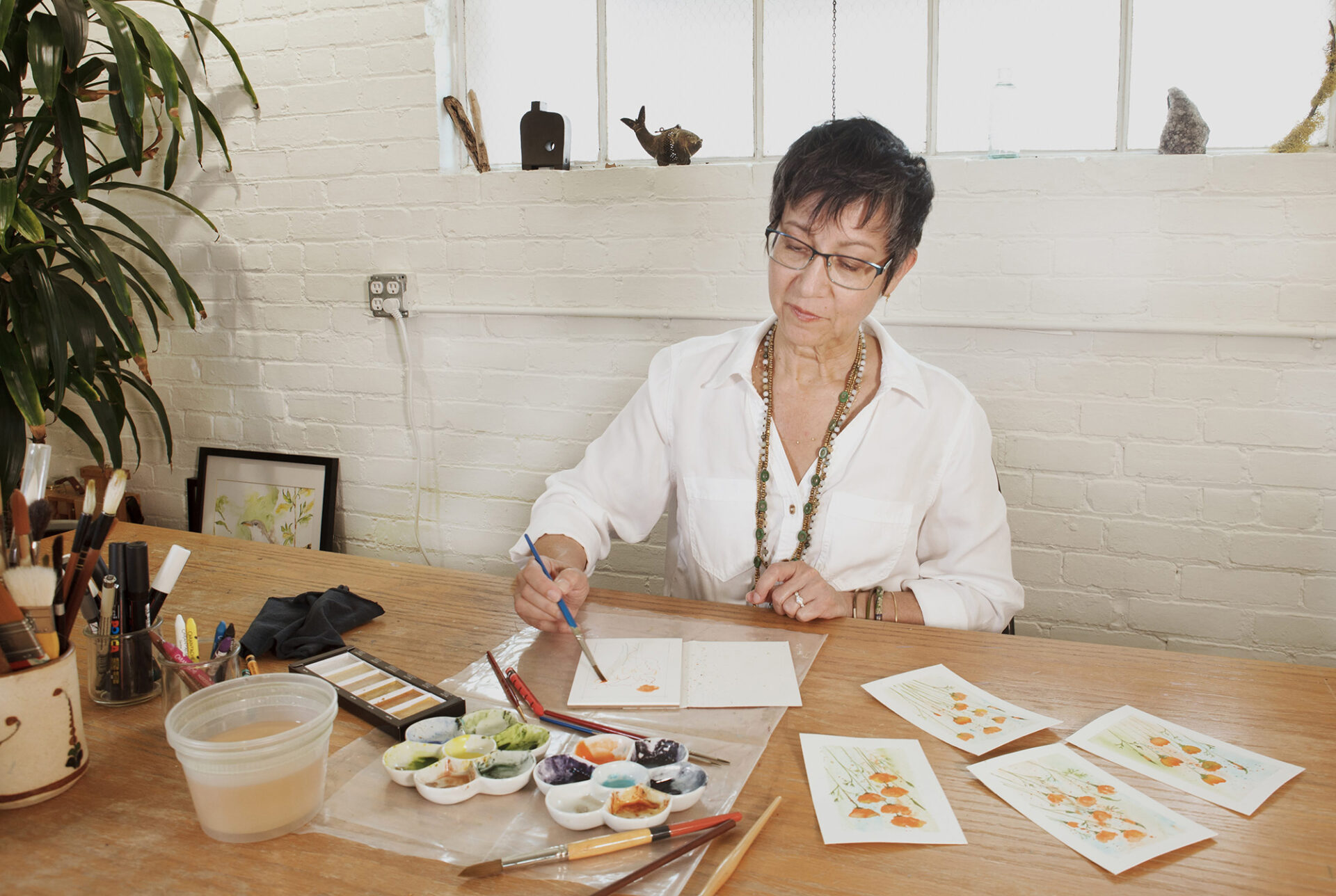
Nguyen Musto captures California poppies in watercolor. Photo: Diane Mitchell
“I’m fascinated when I see a new insect or a bird. I’ll go study it more later. I’m the person who wants to identify everything, and educate people too,” says Nguyen Musto.
For her art, Nguyen Musto adds interpretation to the back of her small prints, allowing her patrons to learn more about species like the California native honey bee, which she often sees at the very levees she has worked to restore right by Old Sacramento. It’s not unusual to see her with a pocket-sized notebook, sketching them and other winglings buzzing around trails nearby.
“If you don’t know why a California native honey bee is just as important as our European honey bees brought over to pollinate almond orchards, you won’t really care about preserving their habitat. So I would say I’m trying to facilitate knowledge for people in an engaging, beautiful way.”
Other Recent Posts
Artist Repurposes Shoreline Detritus
Courtney Griffith scours beaches and parks for everything from plastic to charcoal, mangled ropes and burnt wood to use in her work.
After The Fire: Scenes from Chinese Camp
One of California’s oldest Gold Rush settlements takes stock after a devastating fire — a photo essay.
Youth Group Tackles Heat Islands in Santa Rosa
A new youth advisory team convened by the Greenbelt Alliance and Latino Service Providers is exploring heat disparities in southwest Santa Rosa.
ReaderBoard
Once a month we share reader announcements: jobs, events, reports, and more.
CEQA Reforms: Boon or Brake for Adaptation?
California Environmental Quality Act updates may open up more housing, but some are sounding alarms about bypassed environmental regulations.
Repurposing Urban Lots & Waterfronts: Ashland Grove Park, Palo Alto Levee, and India Basin
In this edition of our professional column, we look at how groups are reimagining a lot in Ashland Grove and shorelines in San Francisco and Palo Alto.
Backyard Harvests Reduce Waste
A Cupertino Rotary Club program led by Vidula Aiyer harvests backyard fruit and reduces greenhouse gases.

